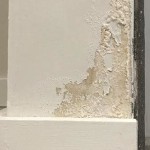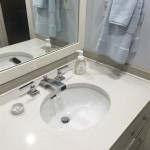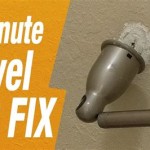How to Remove a Bathroom Ceiling Exhaust Fan
Bathroom ceiling exhaust fans play a crucial role in maintaining a healthy and comfortable environment. They effectively remove moisture, odors, and pollutants, preventing mold growth and improving indoor air quality. However, over time, these fans may become noisy, inefficient, or even malfunction. If you're planning to replace your old bathroom ceiling exhaust fan with a new one, or are simply removing it for renovation purposes, this step-by-step guide will provide you with the necessary information to do it safely and effectively.
1. Gather the Necessary Tools and Materials
Before embarking on the removal process, ensure you have the following tools and materials readily available:
- Screwdriver (Phillips and flathead)
- Wire cutters
- Voltage tester
- Ladder or step stool
- Safety glasses
- Work gloves
- Plastic sheeting (optional)
Having all the necessary tools and materials within reach will streamline the removal process and minimize interruptions.
2. Disconnect the Power Supply
Safety should always be the top priority when working with electrical appliances. Before removing the bathroom ceiling exhaust fan, it is imperative to disconnect the power supply to the fan. This step involves turning off the circuit breaker controlling the fan's power source. To locate the appropriate breaker, consult your electrical panel and look for a label indicating the fan's circuit. After turning off the breaker, use a voltage tester to verify that there is no power running to the fan. This ensures that you are working in a safe environment and prevents the risk of electrical shock.
3. Remove the Cover and Grille
With the power supply safely disconnected, you can proceed to remove the fan's cover and grille. Depending on the fan's design, the cover may be secured with screws or clips. Using a screwdriver, carefully remove the screws or clips holding the cover in place. Once the cover is removed, you will likely find the grille secured with screws or clips as well. Remove the grille in the same manner as the cover.
4. Disconnect the Electrical Wires
With the cover and grille removed, you can now access the electrical wires connected to the fan. Locate the wire terminals on the fan's motor housing. Each wire terminal will be connected to a corresponding wire from the electrical system. Using wire cutters, carefully disconnect the wires from the terminals. It is helpful to note the wire colors and their corresponding terminals to ensure proper reconnection when installing a new fan. Remember to disconnect the wires from the terminals one at a time to avoid confusion and accidental short circuits.
5. Remove the Fan Housing
The fan housing is typically secured to the ceiling with screws. Use a screwdriver to remove these screws, working from the bottom up. Once all the screws are removed, gently lower the fan housing down from the ceiling. Be careful not to damage the ceiling or the fan housing during this step. If the fan housing is attached to a mounting bracket, you may need to disconnect the bracket from the ceiling before removing the fan housing.
6. Clean the Ceiling Opening
After removing the fan housing, you may notice dust or debris accumulated in the ceiling opening. Use a vacuum cleaner with a brush attachment to thoroughly clean the opening and remove any loose debris. This step is important for preventing dust and other contaminations from entering the new fan housing when you install the replacement unit. A clean opening will also ensure a smooth and secure installation of the new fan.
7. Dispose of the Old Exhaust Fan
Once the old bathroom exhaust fan is removed, you need to dispose of it properly. Check with your local waste management authority for guidelines on how to recycle or dispose of old electrical appliances safely. It is important to dispose of old appliances responsibly to minimize environmental impact. Many communities have designated recycling centers for electronic waste, and most retailers offer take-back programs for old electronics.
Removing a bathroom ceiling exhaust fan is a straightforward process that can be done safely and efficiently by following these steps. Remember to prioritize safety by disconnecting the power supply before starting any work. Carefully remove the fan housing, disconnect the electrical wires, and dispose of the old fan properly. By following these steps, you can successfully remove your old exhaust fan and prepare for installing a new one.

How To Remove And Install Bathroom Exhaust Fan

How To Remove Clean Bathroom Ceiling Fan Nutone

Remove Install A Bathroom Fan Grille In 1 Min

How To Replace A Bathroom Exhaust Fan Without Attic Access 12 Step Guide Home Inspector Secrets

Tips For Installing Or Replacing A Bathroom Fan Forbes Home

How To Install A Bathroom Fan Step By Guide Bob Vila

How To Replace Or Repair A Bathroom Fan

Bath Fan Replacement In 10 Minutes Or Less

How To Replace Or Repair A Bathroom Fan

Quick Tip 23 Fixing A Drip At The Bathroom Fan Misterfix It Com
Related Posts







